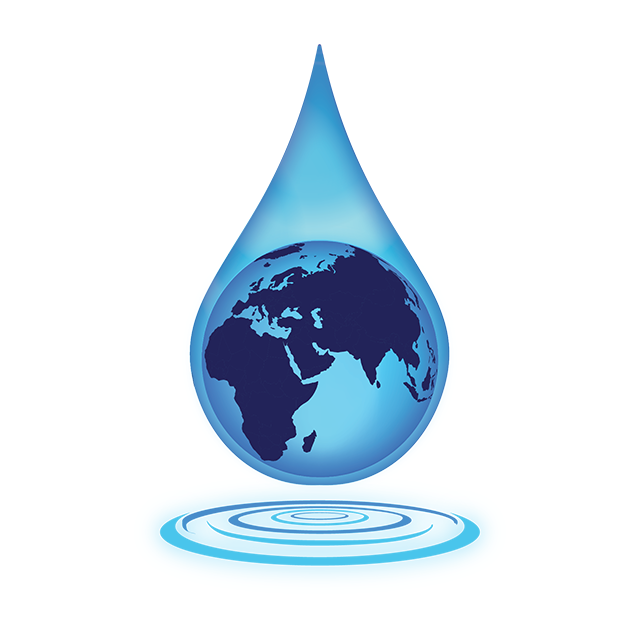
The Global Water Crisis
The Global Need
Water-related diseases kill nearly 1,000 children per day.1 In fact, more children die every day from a lack of clean water and sanitation than from malaria, HIV/AIDS, and measles combined.2
Although humanitarian and developmental organizations continue to direct resources to arrest the global water crisis, the provision of sub-par services, coupled with inadequate maintenance, results in an unacceptably high rate of water system non-functionality within just a few years of installation.
663 million people, about 9% of the global population, lack access to improved drinking water sources.
The Void
Approximately 663 million people, about 9% of the global population, lack access to improved drinking water sources; 48% of those people live in sub-Saharan Africa.3 In fact, in 21 countries, more than one third of the people do not have access to clean drinking water; 16 of those countries are in sub-Saharan Africa.4
More than two thirds of people without access to potable water live on less than $2 a day.5 In low- and middle-income countries, 38% of health care facilities lack any water source.6
The water crisis is the #1 global risk based on impact to society as a measure of devastation and the #8 global risk based on likelihood of occurring within 10 years.7
More children die every day from a lack of clean water and sanitation than from malaria, HIV/AIDS, and measles combined.
Women and Children
Women and children disproportionately suffer the negative consequences from the lack of access to clean water. In Africa and Asia, young women and children walk an average of 3.7 miles a day just to collect water,8 which amounts to an average of 200 million hours every day collecting water.9 72% of households rely on women to fetch and haul the family’s water when there is no water source in the home.10 The ripple effect associated with this process includes missed school days and increased personal risk of danger.
More children die every day from a lack of clean water and sanitation than from malaria, HIV/AIDS, and measles combined.11 Water-related diseases are a leading cause of death for children under the age of five, killing nearly 1,000 children per day.12
Every $1 spent on water and sanitation is estimated to yield a $4 economic return.
Global Economic Loss
In addition to the human cost, the World Bank estimates that lack of access to safe drinking water and sanitation results in a global economic loss of US$260 billion annually.13 In fact, Sub-Saharan Africa loses an estimated 4.3% of its GDP each year due to lack of adequate water supply and sanitation.14 On the other hand, every $1 spent on water and sanitation is estimated to yield a $4 economic return.15
The opportunity cost of collecting water translates into $24 billion of lost economic benefits per year.16 Furthermore, of the 159 million people relying on water taken directly from rivers, lakes and other surface waters, seven out of ten live in sub-Saharan Africa, eight times more than any other region.17
Access to potable water and sanitation is a fundamental human right, and essential to a healthy environment and suitable quality of life.
Right to a Healthy Environment
Access to potable water and sanitation is a fundamental and basic human right, and essential to a healthy environment and suitable quality of life. Although humanitarian and developmental organizations continue to direct resources to arrest the global water crisis, the provision of sub-par services, coupled with inadequate maintenance, results in an unacceptably high rate of water system non-functionality within just a few years of installation.
Providing sustainable access to clean water provides a pathway to mitigating mortality and morbidity while alleviating malnutrition, gender inequality, and disparities in economic opportunity.
Notes:
Source: UNDP Human Development Report 2006, Beyond Scarcity: Power, poverty, and the global water crisis. ↩
Source: WaterAid (2016), "Water: At What Cost?" ↩
Source: UNDP Human Development Report 2006, Beyond Scarcity: Power, poverty, and the global water crisis. ↩
Source: WaterAid (2016), "Water: At What Cost?" ↩
Source: WHO/UNICEF Joint Monitoring Programme for Water Supply and Sanitation, "Progress on Sanitation and Drinking Water 2015" ↩
Source: WHO/UNICEF Joint Monitoring Programme for Water Supply and Sanitation, "Progress on Sanitation and Drinking Water 2015" ↩
Source: World Economic Forum, “Global Risks 2015 Report” ↩
(The) Right to Water, Fact Sheet No. 35. United Nations, OHCHR, UN-HABITAT, WHO ↩
Source: UN Water, www.unwater.org/worldwaterday
Source: WHO/UNICEF Joint Monitoring Programme for Water Supply and Sanitation, "Progress on Sanitation and Drinking Water 2015" ↩
Source: WHO/UNICEF Joint Monitoring Programme for Water Supply and Sanitation, "Progress on Sanitation and Drinking Water 2015" ↩
Source: WHO/UNICEF Joint Monitoring Programme for Water Supply and Sanitation, "Progress on Sanitation and Drinking Water 2015" ↩
Source: WHO (2012), “Global costs and benefits of drinking-water supply and sanitation interventions to reach the MDG target and universal coverage.” Geneva, Switzerland: WHO Press, World Health Organization ↩
Source: WHO (2012), “Global costs and benefits of drinking-water supply and sanitation interventions to reach the MDG target and universal coverage.” Geneva, Switzerland: WHO Press, World Health Organization ↩
Source: WHO (2012), “Global costs and benefits of drinking-water supply and sanitation interventions to reach the MDG target and universal coverage.” Geneva, Switzerland: WHO Press, World Health Organization ↩
Source: WHO (2012), “Global costs and benefits of drinking-water supply and sanitation interventions to reach the MDG target and universal coverage.” Geneva, Switzerland: WHO Press, World Health Organization ↩
Source: WHO/UNICEF Joint Monitoring Programme for Water Supply and Sanitation, "Progress on Sanitation and Drinking Water 2015" ↩





